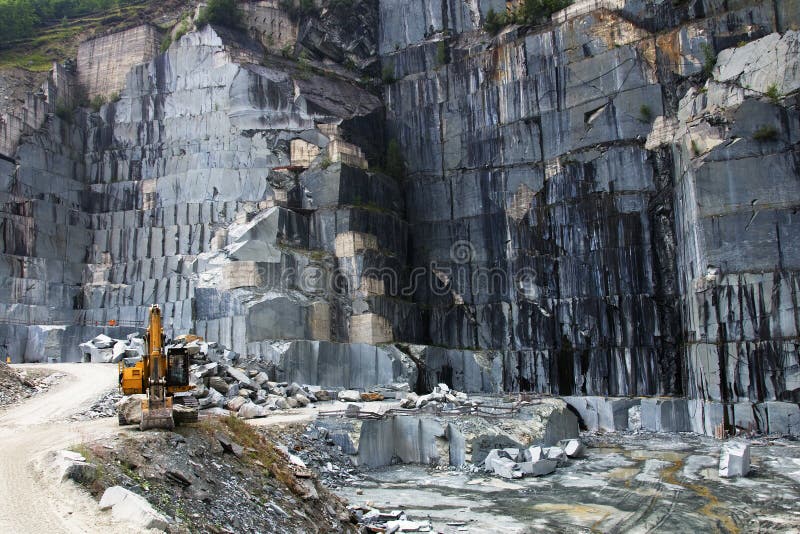Unearthing the Rich History and Lasting Practices of Granite Quarrying
As we stand on the precipice of revealing the elaborate tapestry of granite quarrying, a trip via time discloses not simply the physical act of removing stone however also the cultural and historical relevance woven into the really material of this method. From the old origins that laid the foundation for contemporary quarrying methods to the sustainable methods that are forming the future of this industry, each sculpt mark on granite surface areas informs a tale waiting to be unearthed (granite quarries in south africa). The legacy of granite quarrying extends much beyond plain removal; it is a testimony to human resourcefulness, resilience, and the enduring attraction of this magnificent rock
Ancient Origins of Granite Quarrying
Dating back to old worlds, the method of quarrying granite has been an indispensable component of human history and building development. The earliest evidence of granite quarrying dates back to ancient Egypt, where massive pyramids and complex sculptures were crafted from this sturdy rock. The Egyptians used primitive devices to draw out granite blocks from quarries, showcasing the importance of this material in their monumental buildings.
Relocating onward in history, the Greeks additionally made significant payments to the quarrying of granite. The Greeks utilized granite in various building wonders, such as holy places and statuaries, demonstrating their ability in shaping and carving this hardy rock. The Romans better fine-tuned the strategies of quarrying granite, employing advanced tools like chisels and hammers to essence and shape granite for their legendary frameworks.
With the centuries, the method of quarrying granite has actually developed, with modern-day technologies enhancing performance while maintaining the ageless appeal of this natural rock - granite quarries in south africa. From old human beings to modern builders, the heritage of granite quarrying remains to shape our world
Development of Quarrying Techniques
The development of quarrying strategies has been noted by a continual development towards greater performance and precision in extracting granite. From the rudimentary approaches utilized by our ancestors to the sophisticated modern technologies used in contemporary quarrying procedures, the industry has actually undergone significant advancements. Early quarrying techniques entailed manual labor with standard devices such as knives, hammers, and wedges to remove granite blocks from the earth. As people advanced, strategies like fire-setting and primitive nitroglycerins were presented to assist in the removal process.
Developments in computer-controlled devices and 3D modeling have actually maximized quarrying procedures, leading to marginal ecological impact and boosted sustainability practices. As the demand for granite proceeds to increase, the development of quarrying techniques stays essential to meeting market needs effectively and sustainably.
Cultural Relevance of Granite
Granite holds a profound social value across numerous people because of its enduring existence in building work of arts and revered monuments. From the marvelous pyramids of Egypt to the elaborate makings of the Angkor Wat holy place in Cambodia, granite has been a material of selection for sharing splendour and durability in social heritage. In ancient Rome, granite columns embellished temples and public structures, signifying stamina and durability. The cultural relevance of granite expands past its physical qualities; it personifies durability, stability, and granite quarries in south africa eternity, making it a symbol of sustaining traditions and customs.

Lasting Practices in Quarrying
Amidst the abundant history of granite quarrying and its cultural value exists a growing emphasis on lasting methods within the market. As ecological awareness and issues regarding resource deficiency have enhanced internationally, the quarrying field has actually progressively embraced lasting approaches to reduce its influence on the atmosphere and bordering communities.

Additionally, reclamation and recovery of quarry sites post-extraction are important to sustainable techniques. By recovering quarried locations to a natural or helpful state, such as creating wild animals habitats or recreational rooms, quarriers can counter the ecological impact of their operations and contribute positively to the regional community.
Legacy of Granite Quarrying
With a historical backdrop soaked in craftsmanship and commercial progress, what withstanding effect has granite quarrying left on the landscape of modern culture? The heritage of granite quarrying transcends simple removal practices; it has formed architectural wonders, metropolitan landscapes, and cultural heritage worldwide. The durable nature of granite has made it a favored choice for monuments, structures, and infrastructure, standing as a testimony to the ability and creativity of quarry employees throughout generations.
Moreover, the financial footprint of granite quarrying can not be neglected. The market proceeds to offer job opportunity and drive local economic situations in areas where granite removal prevails. It has additionally stimulated technical innovations in quarrying techniques and tools, bring about more effective and sustainable methods.
In terms of sustainability, the legacy of granite quarrying includes you can check here efforts to alleviate ecological effects through improvement jobs and liable source management. By stabilizing economic rate of interests with environmental stewardship, the industry aims to make sure that future generations can continue to take advantage of this long-lasting natural source.
Verdict
